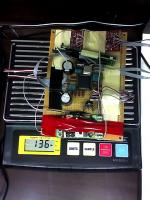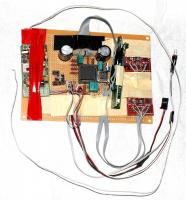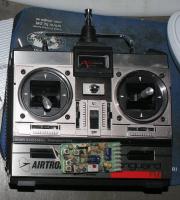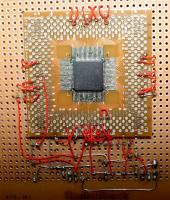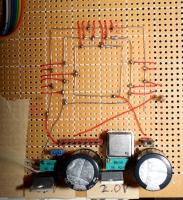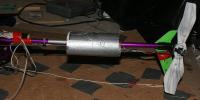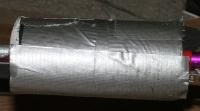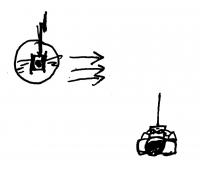Posted by Jack Crossfire |
Feb 28, 2007 @ 05:19 AM | 8,240 Views
With the latest weighing, it looks like the Corona won't have enough thrust to lift avionics and an HD cam simultaneously, destroying literally the only reason for developing autopilot.
Avionics are already 4.8oz without GPS, accelerometers, magnetometer, and padding. Previous work showed camera mounts contributed up to 6oz and the camera was 8oz. The Corona's maximum useful payload was 14oz.
Getting rid of the Airtronics receiver would cut 0.9oz. Then, the GWS receiver could be modified to just transfer data modulated in our own algorithm to the autopilot. The Hitec transmitter would be modified to use our own modulation. Thus, all flight controls + autopilot enable would be processed in the autopilot firmware.
Then of course, there's the TRex 600 route. Now we know LiPo's hit the knee point at 100 recharges. People are getting only 8 minutes of TRex 600 goodness with $200 of brand new batteries. That's not even enough to fly to the field. Look. Copters aren't for carrying. They're for flying, yet people insist a copter which spends most of its time being carried is worth the money.
The battery cost on the Trex 600 is $15/hour to fly. With the cost of parts breakage, Trex 600 could exceed an ultralight.
Posted by Jack Crossfire |
Feb 27, 2007 @ 04:47 AM | 8,350 Views
As much as you want to do this as simply and quickly as possible, you need 110% certainty that autopilot enable really is autopilot enable and not interference. The easiest solution is reverse engineering the Airtronics.
Built an Airtronics test harness with the existing copter radio firmware. The 19 year old Airtronics converted all the high voltages to regions of equally spaced pulses. The low voltages were converted to regions of 0V. Pulse code modulation, you might say.
Recall data from copter to ground used voltage change because the audio processors removed absolute voltages.
Given the resolution of the pulses, the maximum bitrate with copter modulation would be 300 bits/sec and take a small routine to convert the pulses to DC. The maximum bitrate using the Airtronic's pulse modulation is 1500 bits/sec and would take serious firmware to handle the alignment of the pulses.
It really only needs 40 bits/sec to function as an autopilot enable.
8 bits: start code
16 bits: command
16 bits: CRC
Posted by Jack Crossfire |
Feb 26, 2007 @ 12:06 AM | 8,339 Views
Currently, there's no reason to reverse engineer the Airtronics. Throttle can be used to enable autopilot and elevator can be used to
trigger the shutter.
The autopilot enable state is the NASA astronaut in this case. The literature on the internet points to this being the hardest problem to solve. Also, finding all data communication needs CRC checks.
Advantages to reverse engineering Airtronics:
Autopilot enable has a 3 states: enabled, disabled, no signal. Reverse engineering would eliminate errors in detecting the no signal state.
No need to haul around the gigantic Airtronics transmitter.
No need to rewrite the Airtronics side later on, if more capabilities are needed.
Autopilot control could be made portable.
Disadvantages to reverse engineering it:
It would require a second, ground based PIC to generate the signals.
The Airtronics doesn't use a modern frequency range.
Everything the Airtronics does would be replaced by a Spektrum DX7.
Posted by Jack Crossfire |
Feb 24, 2007 @ 11:29 PM | 8,358 Views
So the 4Ah has over 90 recharges and its flight time is 14% lower. It appears one cell is the weak link. When charged in parallel, 2 cells are getting overcharged waiting for the weak cell to charge, a lethal condition. It's probably going to be charging on a battery balancer until retirement.
Considering it takes $100 of batteries to fly for 50 hours and it takes $300 of gas to drive for 50 hours, it's 1/3 as costly to fly.
Meanwhile, been trying to recover the $165 investment in Gumstix Corporation's CEO as fast as possible.
# ls -al
drwxr-xr-x 2 root root 0 Dec 31 16:01 .
drwxr-xr-x 19 root root 0 Dec 31 16:00 ..
-rw-r--r-- 1 root root 0 Oct 26 2006 .bash_history
-rw-r--r-- 1 root root 175 Oct 26 2006 .bash_logout
-rw-r--r-- 1 root root 161 Oct 26 2006 .bash_profile
-rw-r--r-- 1 root root 1711 Oct 26 2006 .bashrc
-rwxr-xr-x 1 root root 2540 Feb 22 2007 arm_copter
# ./arm_copter
Hello world
#
So the answer is yes. You can cross compile for the Gumstix, upload to the flash using zmodem, and run. It doesn't need removable storage or a
new root image every time.
Recall the embedded systems at your day job, $1500 BD players, $10,000 plasmas, $1000 cameras have always used read-only filesystems. The $165 Gumstix is quite an improvement with a writable flash filesystem.
We have serial communication between the PC, Gumstix
...Continue Reading
Posted by Jack Crossfire |
Feb 22, 2007 @ 03:25 AM | 8,544 Views
So after 1 month of defeat by microprocessor, finally got the mane processor to boot. The Gumstix came up easier than any other processor and the complete Linux environment gives it a zero learning curve, proving again if you can't fix it, flag it.
Had to probe every serial port on the Gumstix to find the one with the console. It was the one marked FF-1, for future victims. Unfortunately, boot time is 1 minute.
As nihilistic as it could be, don't expect any UNIX logins at 200ft to happen. Laptop battery life is just too short.
Posted by Jack Crossfire |
Feb 21, 2007 @ 05:12 AM | 8,847 Views
Meet the Gumstix, the most expensive 2 square inches in the universe. The point of the Gumstix is to make a computer the size of a stick of gum. To achieve this gimmick, there are no useful headers on the board. You need to shell out more money on a breakout board.
As rediculous as it is, it's the lightest and cheapest computer available, pound for clockcycle. Despite being an embedded application, the Gumstix has no A/D converters and this particular breakout board has no GPIOs. It's only communication method is straight from PC lore: the UART. 4 UARTs 2 B exact.
Now for the first time, we have high resolution images of the Gumstix.
Posted by Jack Crossfire |
Feb 19, 2007 @ 03:31 AM | 8,294 Views
After deciding wireless telemetry would have a permanent occupation in any autopilot, this has turned into a major operation. With the current
investment in telemetry, it wouldn't have been a stretch to implement ground based autopilot on a laptop instead of blowing the $145.
Through luck, found an uninterrupted data transmission causes Minidisc to preserve more of the bitstream. Any gaps between packets cause it to compress out a lot of data. Instead of a delay between packets for byte alignment, we now have start codes and constantly occupy the carrier.
These changes got Minidisc recording an astounding 3812 bits/sec not counting the CRC and start codes. It's all vapor until the flight test,
of course. In flight, we got 3196 bits/sec not counting CRC and start codes. Roughly 33 data points were returned each second, faster than
film.
Posted by Jack Crossfire |
Feb 18, 2007 @ 07:05 AM | 8,316 Views
And so is assembly language. Despite it's famous CEO, rediculous naming, and insane price tag, the Gumstix still requires a PIC to communicate with the real world. Also back is wireless telemetry. Decided wireless telemetry would be useful for collecting flight data
and easy to implement.
The wireless encoding ended up being based on transitions. A transition is any voltage change over a certain amount. A 1.3ms gap between
transitions is a 1 bit. A 0.4ms gap between transitions is a 0 bit. A 5ms gap is the start of a new packet. Packetizing allows byte alignment. Finally, a super simple CRC provided some error protection.
For capturing the data, the laptop wasn't an option. It only goes 45 minutes on a battery charge and requires a heroine to move it. To avoid hauling a laptop to the field, the waveform was recorded on an ancient minidisc recorder and decoded in the dumpy apartment.
During flight, the combination of Minidisc compression, large packet size, and interference only allowed 573 bits/sec. At that rate, the
copter could only transmit 5 data points per second, nowhere near enough to fly it. Of 1500 packets sent on one flight, only 727 were good. The error checking failed in several packets.
The biggest problem is setting the optimum gain to trick the audio compression, but the optimum gain depends on the ratio of 1's to 0's. All this stuff could be done by spraying huge amounts of money at 802.11 products, buying dedicated telemetry products, and buying a bigger copter of course. At least it's digital, mostly realtime, and much cheaper.
The wireless telemetry did its job, revealing the gyros are producing only 1V of voltage deflection in normal flying. The range was 0-1V. Going to need IDG1000's or serious op-amps.
Posted by Jack Crossfire |
Feb 17, 2007 @ 03:27 AM | 8,415 Views
wunderground wrote:
> Max Temperature: 73 °F
That's right, Bermuda Trapezoid fans. Calif* experienced the warmest February conditions in many years today. Unfortunately getting those
temperatures in February requires a very powerful offshore wind. Still not enough CO2 to do it by politics alone.
Those experienced in Bermuda Trapezoid meteorology know what affects Calif* affects the rest of the world 3 days later. Parked the copter at 10ft in the 30mph wind to measure the effect of translational lift on battery life. Got no improvement over figure 8's.
In other news, the FAA had some words for autopilot freaks.
FAA wrote:
> UAS issued experimental certificates may not be used for
> compensation or hire.
So in government speak, the FAA doesn't allow unmanned air vehicles to be used for any commercial function...
FAA wrote:
> The most common public use of unmanned aircraft today in the United
> States is by the Department of Defense.
unless it's for a government contract. You could say defense contractors are doing everything they can to keep competitors out, by creating legal barriers to entry.
Fortunately you can still manufacture UAV's for a profit. You just can't operate them for a profit. Also, to fly UAV's over U. Know. Where. you need the ability to manually override by line of sight, a rule that even defense contractors must obey.
Scream bloody murder, but recall a certain unnamed, so-called c.o.u.n.t.r.y. once complained about the lack of electronic voting, how India was racing ahead in new technology, leaving t.h.e.m. in the paper stone ages.
http://www.faa.gov/about/office_org/...ineering/uapo/
http://edocket.access.gpo.gov/2007/E7-2402.htm
Posted by Jack Crossfire |
Feb 16, 2007 @ 03:37 AM | 8,476 Views
So the guy from Singapore said our test firmware was workable. Since we already spent the $13 on a spare STR9, decided to spend the $9 to mount it. Sure enough, it failed the same way as the first one.
Good news: both chips are probably good. Bad news: some problem in the hookups is preventing them from running firmware.
It was more bad news in the wireless autopilot department. The TV transmitter was unable to transmit manual pulses over the video channel
and can only transmit voltage change over the audio channel. It would take a pulse width modulation scheme and 2 PIC's to move information over the audio channel, and it would probably be too slow. Further complexity would be required for error correction. Finally, this tremendous effort to make autopilot work over radio would have to be replicated for an onboard version.
So although the STR9 would have been ideal and we've plunged $80 into it, the hours on the airframe are building up, other things could be
happening in the months it would take to bring up STR9, and STR9 may get used someday in some other role.
Gumstix cost: $145 to buy some CEO on Sand Hill Rd. a house that we could never afford no matter how long we worked.
Posted by Jack Crossfire |
Feb 14, 2007 @ 01:23 AM | 8,236 Views
So after 2 nervewracking days of soldering, driving up and down Silicon Valley for parts, and imminent bankruptcy, finally verified all 4 gyros were working.
Gyros were the most expensive single part. By not requiring new gyros, it's $140 in the bank. The only hitch was destroying a surface mount capacitor by either overheating it or detaching the contacts.
It also proved our ability to mount chip scale packages on prototyping boards, saving a lot of money on the accelerometers. The hard part now is ensuring signal integrity over our recycled wireless parts.
Posted by Jack Crossfire |
Feb 13, 2007 @ 04:28 AM | 8,467 Views
So basically, decided not to continue with microprocessors of any kind and focus instead on inertial measurement devices, a much cheaper proposition. Someday we'll build a new STR9 board from the ground up and leave the current one unchanged until the new one proves it's unequivocably broken.
Now the idea is to use our collection of antique wireless equipment to offload the computation to a laptop until the system is proven. Only then can the microprocessor issue resurface.
Plan:
Prove current X/Y/Z gyroscope inventory works. If unsuccessful, consider spending $70 on just X/Y gyros.
Dump gyroscope data to PIC serial port and capture it on laptop.
Transmit PIC telemetry to laptop during flight using 2.4Ghz TV transmitter.
Achieve heading lock by using an antique transmitter to transmit commands from the laptop to the PIC. Our Airtronics from 1988 or
cordless phone from 1995 should do the job.
Expand envelope to cyclic and tail lock, using only gyroscopes.
Order $30 X/Y/Z accelerometer and add accelerometer data to telemetry during flight.
Achieve autonomous hover with laptop and dual transmitter scheme.
Buy $200 Gumstix. Achieve autonomous hover with Gumstix.
$50 GPS module.
Posted by Jack Crossfire |
Feb 11, 2007 @ 08:40 PM | 8,113 Views
Wishlist:
helihobby T-Rex 600 Silver Carbon kit
w/600L Motor
75G ESC/BEC
CF Blades $595.00 + tax
maxamps 22V 4Ah $170
Spektrum DX7 $350
CSM heading hold gyro $100
Total: $1215 + tax + shipping
Deal breaker:
Replacement blades: $80
Forget it.
Gumstix Basix 200 (never in stock) $100
Gumstix Basix 400 (usually in stock) $130
Gumstix breakout gs $30
Total: $130
Looks like the STR9 may be defective, but the only way to swap it is to destroy it. Going to destroy STR9 chip #1 and install STR9 chip #2. If chip #2 doesn't work, goodbye $130.
Since airport pictures are in vogue, have some shots from the last Japan trip.
Posted by Jack Crossfire |
Feb 10, 2007 @ 09:44 PM | 8,589 Views
So after 1 month of banging on the STR9 and getting nowhere, it looks like it would take a geologic time before it ever got to the autopilot
stage.
Despite it's insanely high prices, quirky product names giving no clue to their function, and a tedious search tool for an inventory of only 6 motherboards, Gumstix is the next most economical solution.
Now seriously considering the $200, 400Mhz Gumstix. Since it has almost no GPIO's and no A/D inputs, it would require a PIC to communicate, but we already have a PIC ready 2 go. The Gumstix would almost eliminate the bringup step, be a lot easier to program, and have a lot more clockcycles, but wouldn't be cheap enough to use in any other projects like the STR9 could have if it worked.
The last STR9 experiment was to connect all the power pins. It seemed unnecessary because they're all shorted and sure enough, it did nothing.
Posted by Jack Crossfire |
Feb 10, 2007 @ 01:44 AM | 8,023 Views
Backwards figure 8's are starting to come easier. Not nearly as accurate as our forwards figure 8's but slowly getting easier.
At 27 min, parked it at 15 ft to wait for the battery to fade. The battery didn't fade. It just died at 10ft. Best tail boom strike ever. The pop sounded like a gun, reminding you of what it could do to a human hand.
5.6 hours since the last dead battery drop. 6.9 hours since the last full crash. With enough padding and exclusive deployment as a camera ship, we're probably ready for a TRex 600.
TRex 600 is the dream copter but the $2000 isn't being made. Every year the $2000 gets swallowed by another rent increase, another 20% gas increase, another 20% food increase. Still only 2.5% inflation.
Posted by Jack Crossfire |
Feb 09, 2007 @ 03:23 AM | 8,070 Views
So decided to fly every day this week in honor of Lion Astronaut's departure from the searly bonds of Earth and into the great beyond. The physical side may still be around, but the mental side has joined her sts-107 and sts-51 comrads.
That means flying in whatever rain, wind, and U. Know. Where. U. Know. Where. throws at the copter. The answer is yes. You can fly in 20mph winds and light rain.
Always give it extra upwind cyclic.
Use large stick movements.
Assume when the wind is hitting it sideways that it wants to flip over downwind.
When translating downwind, use tons of extra power. When translating upwind, use super slow throttle.
Keep it close and low since it tends to pick random orientations.
Use the 4Ah battery since it's heavier.
You get really good chopping sounds when cutting throttle and translating upwind.
Posted by Jack Crossfire |
Feb 07, 2007 @ 02:52 AM | 8,793 Views
A heroine being the first to commit astronaut incest makes it a sad day for heroine worshippers. All these years they said men were professionals and heroines were nothing but trouble and the heroine was nothing but trouble.
Someone is going to make Fatal Astronaut Attraction, in which a heroine spends 6 months on the space station with another heroine, a man, a steel hammer, knife, and some garbage bags.
Posted by Jack Crossfire |
Feb 06, 2007 @ 02:13 AM | 9,596 Views
It is the largest ocean liner ever made by the hand of man in all history.
Queen Mary II was modeled after Titanic. In fact, it was intended to fill the same role as Titanic, the living reincarnation of Titanic, U might say. It's the largest ship to enter San Francisco bay.
Expected to be one of a few people viewing the ship and get up close, but was greeted by mobs of desperate Americans stepping over each other to glimpse the European marvel. It was like being in Titanic.
...Continue Reading
Posted by Jack Crossfire |
Feb 03, 2007 @ 06:04 AM | 9,281 Views
So after the victory at JTAG, it's been nothing but grief. The program which is supposed to turn on a GPIO either isn't running at all, is running but not setting the GPIO properly, or the chip is dead. The flash is programmed right. The configuration bits are set right. Now it looks like the $70 JTAG programmer may be required again to debug this problem. So much for autopilot.
In other news, managed better success by flying backwards, pirouetting, returning backwards, pirouetting, flying backwards. A few iterations later, use aft cyclic during the pirouette and you get slight widening of the figure 8 before the sideways cyclic inputs get too complicated.
Finally, for a good time go to
http://heroinewarrior.com/robotics.php3
Since no-one is going to that, we're going to put neverbeforeseen photos on here to hook you. Then you'll be sucked in by a power greater than U have ever known. Heroine 2200 is going to need a 3rd tower soon, then she'll never be the same. 2 was the magic number.
Posted by Jack Crossfire |
Feb 02, 2007 @ 01:23 AM | 9,361 Views
So the most challenging trick in a fixed pitch copter is the backwards figure 8. Don't even bother in an airplane. Concluded we have trouble
seeing roll attitude from 10 oclock. The solution: nose-in/sideways passes, sideways in and out, and backwards figure 8's. They're probably
not possible without a heading hold gyro, and in no circumstances can they be fast.
In other news, the copter hit 50. 50 hours of flying. Would U believe the first few hours were spent just trying to debug the receiver? The
controls randomly froze after a few seconds of hovering. Other times the motor would stop at random points. The controls wouldn't return
until several minutes after it crashed, usually in the form of sudden motor spins after several minutes of prodding. Took several days to
figure out the crystal was loose.
Would U believe the very first flight resulted in a hover with the copter spinning out of control? Didn't even try again that day. Only a
day later realized the solution was to invert the gyro.
Hard to believe it was once that hard.
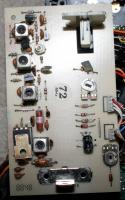 Views: 364
Views: 364 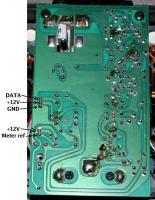 Views: 292
Views: 292 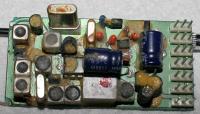 Views: 297
Views: 297 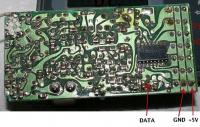 Views: 309
Views: 309 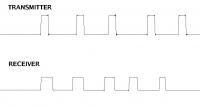 Views: 275
Views: 275 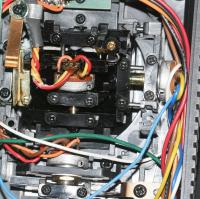 Views: 319
Views: 319 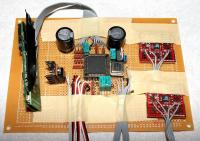 Views: 322
Views: 322 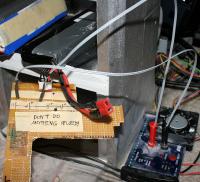 Views: 431
Views: 431 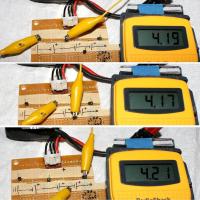 Views: 314
Views: 314 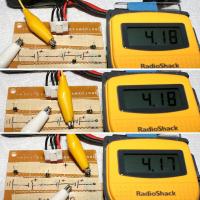 Views: 313
Views: 313 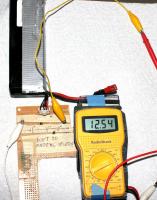 Views: 303
Views: 303 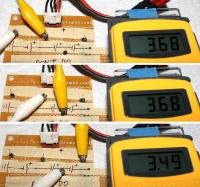 Views: 319
Views: 319 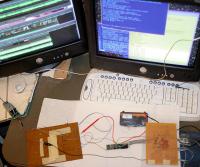 Views: 416
Views: 416  Views: 342
Views: 342  Views: 310
Views: 310 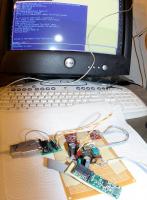 Views: 377
Views: 377 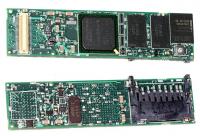 Views: 458
Views: 458  Views: 363
Views: 363 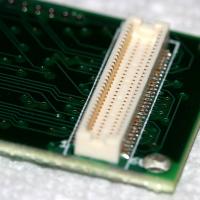 Views: 347
Views: 347  Views: 347
Views: 347  Views: 374
Views: 374  Views: 358
Views: 358  Views: 359
Views: 359  Views: 349
Views: 349  Views: 311
Views: 311 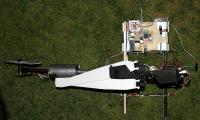 Views: 340
Views: 340 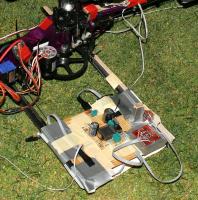 Views: 390
Views: 390  Views: 298
Views: 298 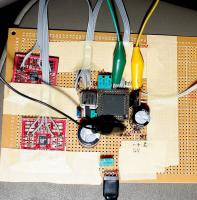 Views: 457
Views: 457  Views: 301
Views: 301 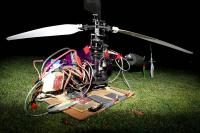 Views: 374
Views: 374 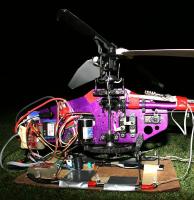 Views: 392
Views: 392 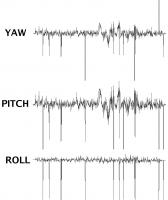 Views: 312
Views: 312  Views: 347
Views: 347 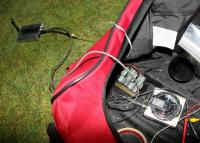 Views: 361
Views: 361  Views: 427
Views: 427  Views: 302
Views: 302 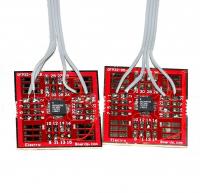 Views: 384
Views: 384  Views: 324
Views: 324  Views: 293
Views: 293  Views: 508
Views: 508  Views: 432
Views: 432  Views: 457
Views: 457  Views: 436
Views: 436  Views: 421
Views: 421  Views: 470
Views: 470  Views: 447
Views: 447  Views: 447
Views: 447 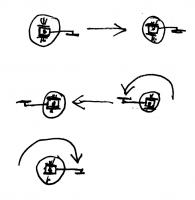 Views: 451
Views: 451  Views: 476
Views: 476  Views: 400
Views: 400  Views: 430
Views: 430  Views: 461
Views: 461  Views: 562
Views: 562 